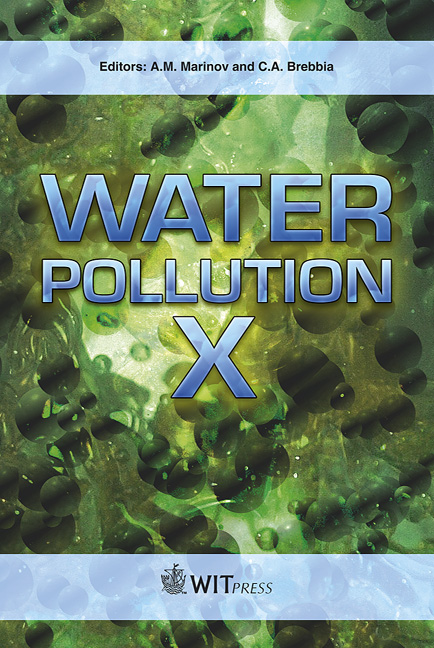Alkylphenol Ethoxylates And Bisphenol A In Surface Water Within A Heavily Urbanized Area, Such As Paris
Price
Free (open access)
Transaction
Volume
135
Pages
12
Page Range
131 - 142
Published
2010
Size
625 kb
Paper DOI
10.2495/WP100121
Copyright
WIT Press
Author(s)
M. Cladière, J. Gasperi, S. Gilbert, C. Lorgeoux & B. Tassin
Abstract
This work focused on alkylphenol ethoxylates (APEOs) and bisphenol A (BPA) in surface water at the scale of the upper part of the Seine basin. Although this basin is vulnerable, since it undergoes a combination of strong human pressures (Paris conurbation) with very limited dilution via the Seine River, no comprehensive data was available for these compounds. In this context, the evolution of the pollutant concentrations and loads was assessed during two sampling campaigns (April and July 2009) along a 300 km-transect. Hence, 18 stations (10 sites on the Seine River, four tributaries and four wastewater treatment plants – WWTPs) were considered. Additional campaigns were also conducted over 2009 on four sites on the Seine River. The BPA concentrations range from 7.2 to 127 ng.l-1 in surface water, while higher concentrations of APEOs (324 ± 153 ng.l-1) were observed. Based on our first results, no spatial variability of concentrations between up- and downstream sites, or any seasonal variability, were highlighted. During the longitudinal campaigns, an increase of the pollutant loads between up- and downstream sites was clearly noticed. Contrary to BPA, for which a limited seasonal variation of loads was observed at the basin outlet (1,400 and 1,500 g.d-1), the APEO loads significantly vary (10,000 and 5,500 g.d-1). Mass balances between the inputs (tributaries + WWTPs) and the exported loads reveal that the BPA inputs are lower than the exported loads, suggesting that other inputs have to be considered along the transect studied. For APEOs, the inputs appear higher than the exported loads, underscoring the in-stream removal of APEOs. Globally, the results reveal that the removal of APEOs and the number of ethoxylate units are correlated – the longer the ethoxylate chain, the higher the removal. Keywords: alkylphenol ethoxylates, bisphenol A, endocrine-disrupting compounds, mass load, nonylphenol, octylphenol, surface water.
Keywords
alkylphenol ethoxylates, bisphenol A, endocrine-disrupting compounds, mass load, nonylphenol, octylphenol, surface water





